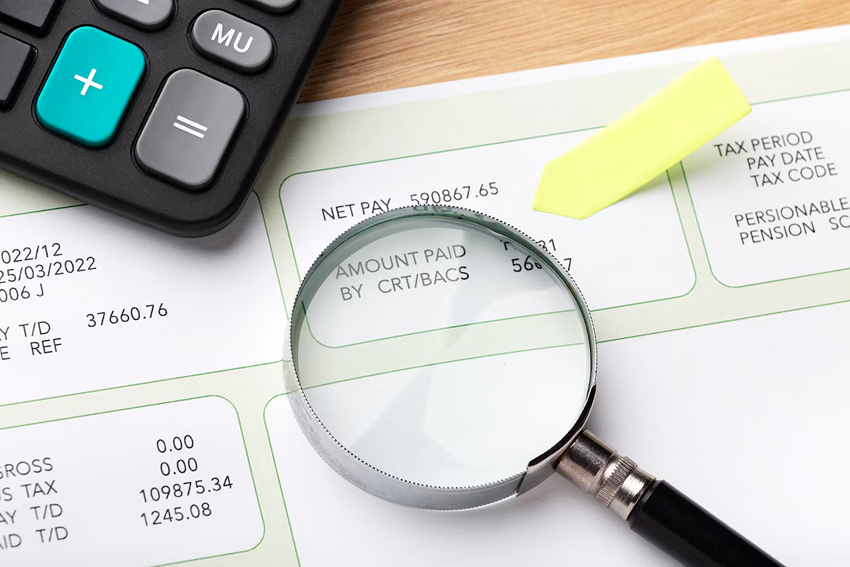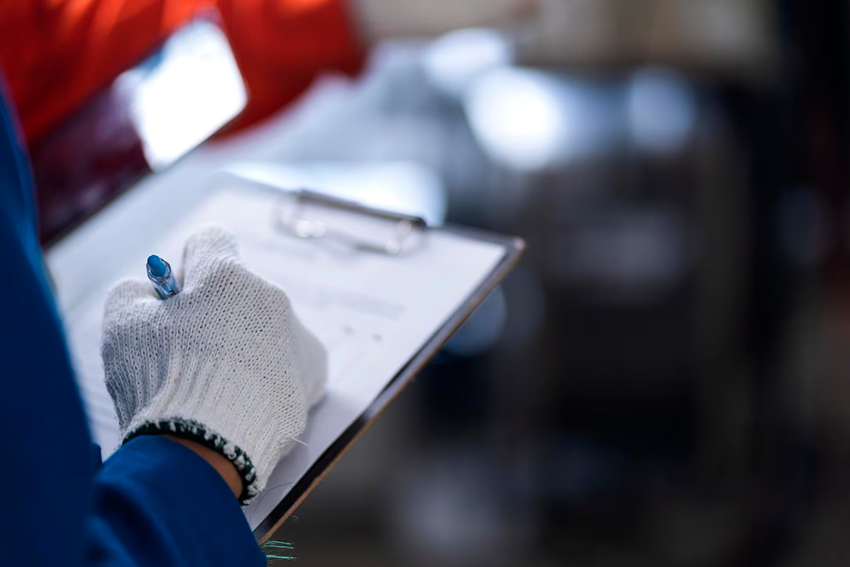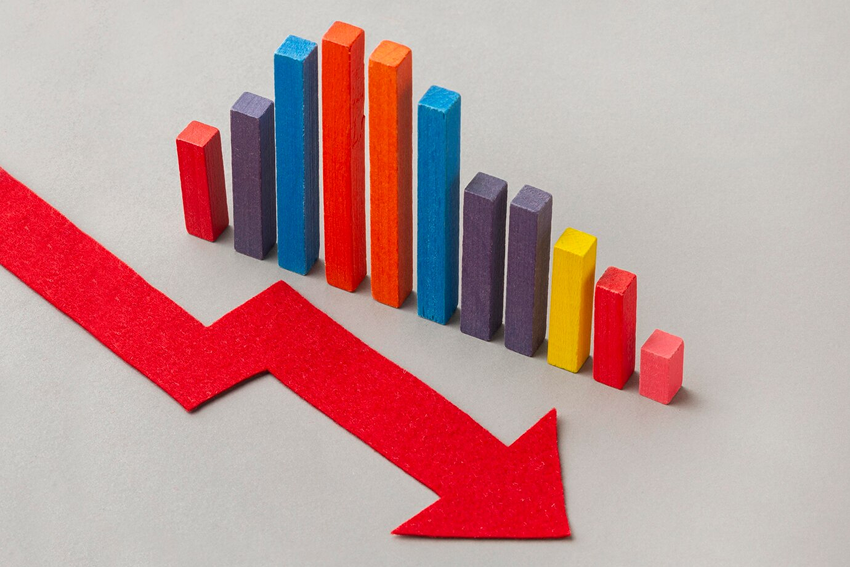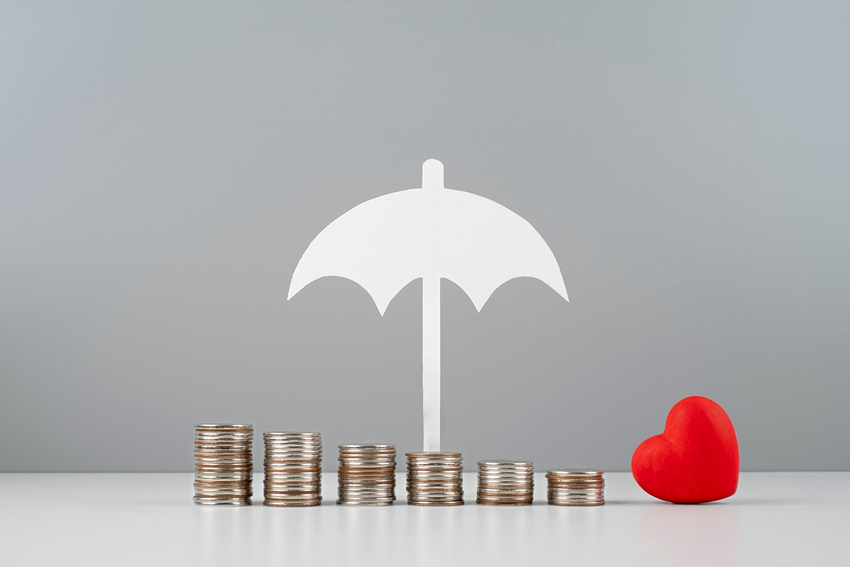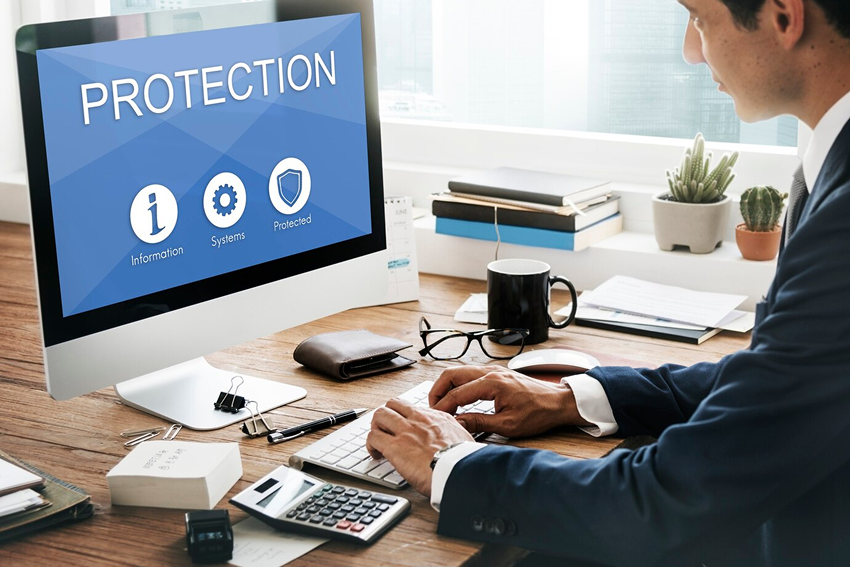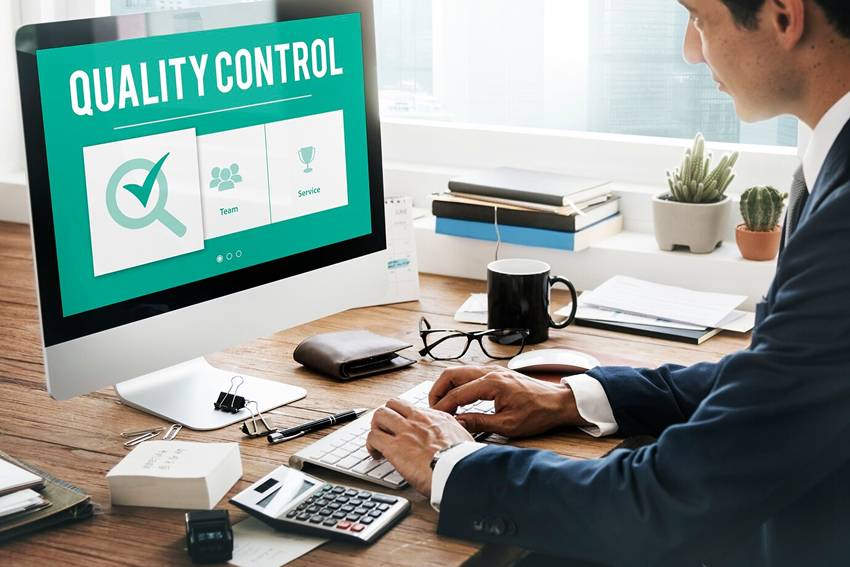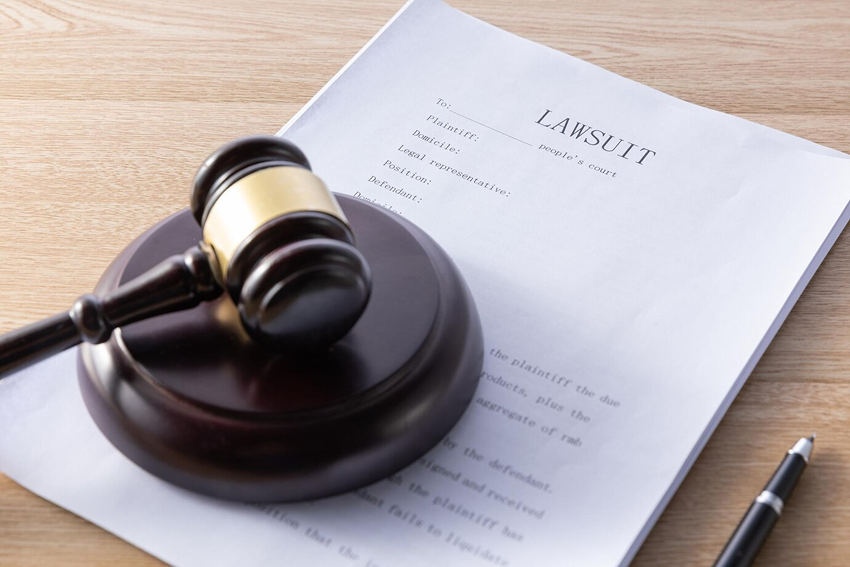Product Liability Insurance
Product Liability Insurance covers businesses for legal liability, bodily injury, property damage, and legal defense costs due to defective products.
- Manufacturing Defects
- Design Defects
- Breach of Implied Warranty
Principal/Main Coverage under Product Liability Insurance
Harm or injury caused to a third party due to a defect in the product. This may include any physical injury, illness, or even death resulting from the use of the product.
Covers actual physical damage caused to third-party property due to a defective product. This applies once the product has left the control of the business and has reached the consumer or user.
The policy includes coverage for legal fees, investigation costs, and expenses incurred in defending a claim made against the insured, subject to the limits specified in the policy.

Factors Affecting the Coverage of Product Liability Insurance (Incorporating Policy Wordings)

Why a Company Needs Product Liability Insurance
Financial Protection Against Lawsuits
Defective products can lead to third-party claims for bodily injury or property damage. Product Liability Insurance covers the costs of legal defense, settlements, and compensation, ensuring that businesses are not financially burdened by lawsuits.
Mandatory Requirements in Certain Industries
Some sectors, such as food, pharmaceuticals, and consumer goods, often require businesses to carry Product Liability Insurance to comply with regulatory standards or contractual obligations. Without this insurance, companies may not be able to operate in certain markets or industries.
Coverage for Product-Related Risks
Even with stringent quality control, unexpected product defects can occur, resulting in liability claims. This insurance provides protection for claims related to product design flaws, manufacturing defects, and failure to warn or provide adequate instructions.
Protection for Global Operations
Companies with products distributed internationally face higher liability risks, particularly in regions like the U.S. and Canada, where product-related claims are more common. Product Liability Insurance can offer extended territorial coverage to protect against these risks.
Reputation Management
A defective product can cause significant harm to a company’s reputation. While the insurance itself doesn’t repair the reputational damage, it mitigates the financial impact of claims, recalls, and settlements, allowing the company to focus on rebuilding trust with consumers.
Compliance with Supply Chain Requirements
Many retailers, wholesalers, and distributors require their suppliers to have Product Liability Insurance. It ensures that all parties in the supply chain are protected against potential claims that arise from defective products.

Why a Company Needs Product Liability Insurance
Financial Protection Against Lawsuits
Defective products can lead to third-party claims for bodily injury or property damage. Product Liability Insurance covers the costs of legal defense, settlements, and compensation, ensuring that businesses are not financially burdened by lawsuits.
Mandatory Requirements in Certain Industries
Some sectors, such as food, pharmaceuticals, and consumer goods, often require businesses to carry Product Liability Insurance to comply with regulatory standards or contractual obligations. Without this insurance, companies may not be able to operate in certain markets or industries.
Coverage for Product-Related Risks
Even with stringent quality control, unexpected product defects can occur, resulting in liability claims. This insurance provides protection for claims related to product design flaws, manufacturing defects, and failure to warn or provide adequate instructions.
Protection for Global Operations
Companies with products distributed internationally face higher liability risks, particularly in regions like the U.S. and Canada, where product-related claims are more common. Product Liability Insurance can offer extended territorial coverage to protect against these risks.
Reputation Management
A defective product can cause significant harm to a company’s reputation. While the insurance itself doesn’t repair the reputational damage, it mitigates the financial impact of claims, recalls, and settlements, allowing the company to focus on rebuilding trust with consumers.
Compliance with Supply Chain Requirements
Many retailers, wholesalers, and distributors require their suppliers to have Product Liability Insurance. It ensures that all parties in the supply chain are protected against potential claims that arise from defective products.
Probable Causes of Litigation Covered under Product Liability Insurance
Product Liability Insurance typically provides coverage for claims and litigation arising from several key causes related to defective products. These include:
Manufacturing Defects
Claims resulting from flaws or errors in the production process, where the product does not meet the intended design specifications. These defects can occur during manufacturing, assembly, or packaging and can lead to significant harm or damage to consumers or third parties.
Design Defects
Even if the product is manufactured correctly, flaws in the design itself can lead to unsafe products. Design defects make a product inherently dangerous, even when used as intended. Product Liability Insurance covers claims arising from design flaws that pose safety risks to users.
Failure to Provide Adequate Warnings or Instructions
If a product lacks sufficient warnings or instructions about potential risks associated with its use, it can result in liability claims. For instance, failure to warn consumers about proper handling, potential hazards, or side effects of a product can lead to lawsuits.
Negligent Misrepresentation
If a company makes false or misleading statements about a product, whether in advertising, labeling, or sales materials, it can face litigation. Claims may arise if consumers suffer harm due to reliance on inaccurate or incomplete information.
Breach of Implied Warranty
Consumers expect that products will be safe to use as intended. If a product fails to meet these expectations and causes harm, a company may face claims for breach of implied warranty, where the product did not perform as a reasonable consumer would expect.
Product Contamination or Spoilage
In industries like food and beverage, contamination or spoilage can lead to serious health issues for consumers. Claims arising from contaminated or unsafe products fall under Product Liability Insurance.
Add-On Coverages for Product Liability Insurance
Product Recall Expenses
- This add-on covers the costs related to recalling defective or dangerous products from the market. It includes expenses for transportation, storage, disposal, and public relations efforts to manage the impact of the recall.
- Covered by: ICICI Lombard, SBI General
Product Guarantee
- Provides protection against claims for a product failing to meet the guaranteed performance or quality standards promised by the business. It covers financial liabilities arising from non-performance or non-compliance with the product guarantee.
- Covered by: Bajaj Allianz, ICICI Lombard
Product Warranty Liability
- Offers protection for claims where a product fails to meet specified performance or safety warranties. It covers the financial losses and liabilities associated with breaches of these warranties.
- Covered by: ICICI Lombard, SBI General
Extended Reporting Period
- Provides coverage for claims made after the policy period has expired, as long as the incident occurred during the active policy period. This is particularly important for businesses transitioning between policies or ceasing operations but wanting protection for past product issues.
- Covered by: IFFCO TOKIO, Bajaj Allianz
North American Jurisdiction Extension
- While many policies exclude coverage in high-risk jurisdictions like the U.S. and Canada, this add-on allows businesses to extend their coverage to these regions, subject to additional premiums and specific terms.
- Covered by: Bajaj Allianz, HDFC ERGO, IFFCO TOKIO

Add-On Coverages for Product Liability Insurance
Product Recall Expenses
- This add-on covers the costs related to recalling defective or dangerous products from the market. It includes expenses for transportation, storage, disposal, and public relations efforts to manage the impact of the recall.
- Covered by: ICICI Lombard, SBI General
Product Guarantee
- Provides protection against claims for a product failing to meet the guaranteed performance or quality standards promised by the business. It covers financial liabilities arising from non-performance or non-compliance with the product guarantee.
- Covered by: Bajaj Allianz, ICICI Lombard
Product Warranty Liability
- Offers protection for claims where a product fails to meet specified performance or safety warranties. It covers the financial losses and liabilities associated with breaches of these warranties.
- Covered by: ICICI Lombard, SBI General
Extended Reporting Period
- Provides coverage for claims made after the policy period has expired, as long as the incident occurred during the active policy period. This is particularly important for businesses transitioning between policies or ceasing operations but wanting protection for past product issues.
- Covered by: IFFCO TOKIO, Bajaj Allianz
North American Jurisdiction Extension
- While many policies exclude coverage in high-risk jurisdictions like the U.S. and Canada, this add-on allows businesses to extend their coverage to these regions, subject to additional premiums and specific terms.
- Covered by: Bajaj Allianz, HDFC ERGO, IFFCO TOKIO
Sudden and Accidental Pollution
- Provides coverage for third-party claims related to environmental damage caused by the insured’s products, provided that the pollution is sudden and accidental.
- Covered by: ICICI Lombard, IFFCO TOKIO, Raheja QBE
Vendors Liability
- This add-on provides coverage for vendors who sell or distribute the insured’s products. It protects both the manufacturer and the vendor from liability claims related to defective products.
- Covered by: HDFC ERGO, SBI General
Errors in Design or Formula
- Covers claims arising from defects or errors in the design or formula of a product that render it unsafe for use. This is essential for companies involved in product development or formulation.
- Covered by: IFFCO TOKIO, Bajaj Allianz
Transportation Risk
- Provides coverage for incidents or damages occurring while the product is in transit. This is crucial for businesses shipping products over long distances.
- Covered by: IFFCO TOKIO, Raheja QBE
Product Replacement and Repair
- Covers the costs associated with repairing or replacing defective products that have caused third-party damage.
- Covered by: ICICI Lombard, HDFC ERGO
Incidental Medical Malpractice
- Provides coverage for medical products that cause harm to patients due to improper usage or defects. This is essential for businesses involved in the manufacturing or distribution of medical products.
- Covered by: SBI General, IFFCO TOKIO
Third-Party Product Handling
- This add-on provides protection for products that are handled by third parties, such as distributors or contractors, ensuring liability claims related to handling defects are covered.
- Covered by: ICICI Lombard, Bajaj Allianz
Product Liability for Exported Goods
- Extends coverage to products exported to foreign markets beyond the typical coverage regions, providing essential protection for businesses with international operations.
- Covered by: IFFCO TOKIO, SBI General
Contamination and Spoilage Coverage
- Specifically designed for the food and beverage industry, this coverage protects against claims related to contamination or spoilage of products, which can result in significant third-party liability claims.
- Covered by: Raheja QBE, HDFC ERGO
Act of God Extension
- Covers damages or losses arising from natural disasters (e.g., floods, earthquakes) that impact the safety and performance of the insured products.
- Covered by: Bajaj Allianz, ICICI Lombard
General Exclusions under Product Liability Insurance
While Product Liability Insurance provides extensive coverage, there are several standard exclusions that apply across most policies. Here are the key exclusions:
Contractual Liability:
Liabilities assumed under any contract or agreement are generally excluded unless the liability would exist without the contract. The policy only covers liability that arises naturally by law, not obligations agreed upon through contracts.
Fines, Penalties, and Punitive Damages:
Claims for legal fines, penalties, or punitive damages imposed by courts are typically not covered. Insurance policies are designed to cover compensatory damages but not punitive amounts meant to punish.
Deliberate or Willful Acts:
Any claims arising from intentional acts, misconduct, or deliberate non-compliance with laws or regulations are excluded. The policy does not cover willful negligence or misconduct by the insured.
Product Recall Costs:
While add-ons are available for Product Recallexpenses, standard policies exclude the costs of recalling, repairing, or replacing defective products unless explicitly covered by an endorsement.
Professional Services:
Liabilities arising from professional services (such as advice or consultancy) are typically excluded, as these require specialized Professional Indemnity Insurance.
Asbestos:
Claims arising from the production, sale, or exposure to asbestos are excluded due to the high risks and costs associated with asbestos-related claims.
Nuclear and Radiation Hazards:
Claims related to nuclear energy, ionizing radiation, or radioactive contamination are excluded across most policies due to the extreme risks associated with these hazards.
War, Terrorism, and Civil Commotion:
Claims arising from acts of war, terrorism, riots, strikes, or civil commotion are excluded from coverage. Specific terrorism-related endorsements can be purchased separately, depending on the insurer.
Known Defects Prior to Policy Inception:
Policies exclude claims arising from defects or incidents that were known or reported before the policy period began.
Injury to Employees:
Injuries to employees are not covered by Product Liability Insurance. Instead, they are typically covered under Workers’ Compensation or Employers’ Liability Insurance.
Pollution and Environmental Damage:
While sudden and accidental pollution may be covered through endorsements, most policies exclude liabilities related to gradual pollution, contamination, or environmental harm caused by products.
Product Installed in Aircraft:
Products intended for use in aircraft or any other high-risk environments (such as space vehicles) are typically excluded, unless specific extensions or policies are purchased.
Damage to Property Owned or in Care, Custody, or Control:
Damage to property that is owned, leased, or in the insured’s care, custody, or control is excluded from coverage. This exclusion ensures that only third-party property damage claims are covered.
Defective Design or Workmanship:
Claims arising from poor design, faulty workmanship, or failure to follow proper manufacturing processes are generally excluded unless specific add-ons for design errors are in place.
Pure Financial Loss:
Claims for pure financial losses (e.g., loss of market share, goodwill, or profits) without accompanying bodily injury or property damage are excluded unless an add-on for financial loss is included.
Why Take a Product Liability Insurance Policy from goinsureindia.com
Comprehensive Coverage
goinsureindia.com provides a wide range of coverage options, including protection against bodily injury, property damage, legal defense costs, and the most relevant add-on coverages such as Product Recall, Product Guarantee, and Product Warranty Liability. The policies are designed to cover the full scope of potential product liability risks.
Customizable Policies
Every business has unique needs, especially when it comes to product liability. goinsureindia.com offers highly customizable policies that can be tailored to your specific business requirements. Whether you operate locally or globally, you can select the appropriate coverage limits, geographical scope, and add-on protections.
Competitive Premiums
While offering broad and customizable coverage, goinsureindia.com ensures that its premiums remain competitive in the market. Businesses can get high-quality coverage at affordable rates, without compromising on essential protections.
Industry Expertise
With extensive experience in various industries, goinsureindia.com understands the specific product liability risks businesses face. From manufacturing and technology to food and beverages, we provide policies that are relevant and adaptable to different industries’ needs.
Strong Legal Support
In the event of a claim, goinsureindia.com provides access to a panel of expert legal counsel, ensuring that you receive the best possible defense. Our policies cover legal fees, settlement negotiations, and court awards, offering you peace of mind that your legal defense is handled professionally.
Seamless Claims Process
goinsureindia.com is known for its fast and efficient claims handling. Our dedicated claims team ensures that your claims are settled quickly, minimizing business disruptions. Whether it’s a small product defect or a major liability case, we are committed to making the claims process hassle-free.
Financial Stability
With strong financial backing and reliable reinsurance treaties, goinsureindia.com ensures that it can cover high-value claims. This financial stability gives businesses the confidence that their insurer can meet obligations when needed the most.
Access to Add-On Coverage
goinsureindia.com offers a range of essential add-ons, including Product Recall, Sudden and Accidental Pollution, Vendors Liability, and Errors in Design or Formula, providing extensive protection against potential product-related risks.
Reputation for Excellence
goinsureindia.com has built a solid reputation for delivering reliable, comprehensive, and tailored insurance solutions. With years of experience and a focus on customer satisfaction, we are a trusted provider for businesses across various sectors, helping them mitigate risk and protect their assets.
Flexible Payment Options
To make insurance more accessible, goinsureindia.com offers flexible premium payment options. Businesses can choose from a range of payment plans that suit their cash flow, ensuring that high-quality coverage remains affordable.
Local and Global Expertise
Whether your business operates within India or has international exposure, goinsureindia.com provides coverage that spans multiple territories. With expertise in handling both domestic and global product liability risks, our policies are designed to meet your geographical needs.
Dedicated Customer Support
Our dedicated customer support team is always available to assist with policy questions, claims processing, or any other concerns. We prioritize responsiveness and strive to provide the best possible service at every step of the way.
Claim Process under Product Liability Insurance
Filing a claim under Product Liability Insurance with goinsureindia.com is a straightforward process. Here’s a step-by-step guide to help businesses manage claims efficiently:
Incident Notification
As soon as you become aware of a potential product liability claim, notify goinsureindia.com immediately. Early notification allows us to assist you promptly and begin the process of investigating the claim. You will need to provide details about the incident, including the product involved, the nature of the claim, and any potential third-party damages.
Submission of Claim Documents
Gather all relevant documents that will support your claim. This may include:
- Proof of product defect
- Customer complaints or notifications of injury/damage
- Medical reports (if bodily injury is involved)
- Invoices and records of product transactions
- Any photographs or evidence of the defective product
- These documents should be submitted to your claims handler for evaluation.
Investigation of the Claim
Once a claim is submitted, goinsureindia.com will conduct a thorough investigation. This may involve appointing experts to assess the product defect, visiting the site of the incident, or reviewing medical and technical evidence to determine the legitimacy and scope of the claim.
Appointment of Legal Counsel
If the claim proceeds to litigation or if legal defense is required, goinsureindia.com will appoint experienced legal counsel to represent your business. The policy covers legal defense costs as part of the insurance coverage.
Negotiation and Settlement
In cases where a settlement is more appropriate than pursuing legal action, goinsureindia.com will negotiate with the third-party claimant on your behalf. We will aim to resolve the issue quickly, minimizing the disruption to your business.
Claim Evaluation and Compensation
- After the investigation, the insurer will evaluate the validity of the claim. If the claim is deemed valid, goinsureindia.com will compensate the third party for any bodily injury, property damage, or other covered losses, up to the policy limits.
- The settlement will include legal costs, claimant fees, and any damages awarded.
Resolution and Payment
Once the claim has been settled or a court judgment has been made, goinsureindia.com will arrange for the appropriate payment or compensation. The insured will be kept informed throughout the process to ensure transparency and efficiency.
Post-Claim Review
After the claim is resolved, goinsureindia.com may conduct a post-claim review to provide recommendations on how to avoid similar incidents in the future. This can help businesses improve product safety protocols and reduce future claims.
What Nature of Entities/Individuals Could Have This Policy?
Product Liability Insurance is suitable for a wide range of businesses and professionals, including:
Manufacturers
Retailers
Distributors and Wholesalers
Importers and Exporters
E-commerce Platforms and Online Retailers
Food and Beverage Companies
Pharmaceutical and Medical Device Manufacturers
Technology and Electronics Companies

What Nature of Entities/Individuals Could Have This Policy?
Manufacturers
Retailers
Distributors and Wholesalers
Importers and Exporters
E-commerce Platforms and Online Retailers
Food and Beverage Companies
Pharmaceutical and Medical Device Manufacturers
Technology and Electronics Companies
Automotive and Aviation Suppliers
Furniture and Home Appliance Manufacturers
Construction Material Suppliers
Cosmetics and Personal Care Product Manufacturers
Toy and Children's Product Manufacturers
Sports Equipment Manufacturers and Distributors
Clothing and Textile Manufacturers
Jewelry Manufacturers and Sellers
Chemical and Hazardous Material Producers
Agricultural Product Suppliers
Medical Supply Distributors
Packaging and Labeling Companies
Companies involved in Research and Development of New Products
Consumer Goods Manufacturers
Industrial Equipment Manufacturers
Renewable Energy Product Manufacturers
Any business selling or distributing physical products
Who Can Sue a Company Covered under Product Liability Insurance
End Consumers
End consumers who suffer injury or damage due to a faulty product can sue the manufacturer, distributor, or seller—product liability insurance protects your business from such legal claims.
Third-Party Users
Individuals who may not have purchased the product but were affected by its use can also file claims. Product liability insurance safeguards your business from such unforeseen legal actions.
Retailers
Retailers can also initiate claims if a defective product leads to financial loss or reputational damage. Product liability insurance helps protect your business from such downstream risks in the supply chain.
Distributors and Wholesalers
Distributors and wholesalers can sue if a defective product results in legal or financial consequences for them. Product liability insurance offers protection against such claims arising from your distribution network.
Suppliers
Suppliers affected by a defective product may file claims if it causes them loss or legal exposure. Product liability insurance helps shield your business from such supplier-related risks.
Government Regulatory Bodies
Government regulatory bodies can take legal action or impose penalties if a product violates safety standards or causes public harm. Product liability insurance helps cover legal costs and compliance-related risks.

Who Can Sue a Company Covered under Product Liability Insurance
End Consumers
End consumers who suffer injury or damage due to a faulty product can sue the manufacturer, distributor, or seller—product liability insurance protects your business from such legal claims.
Third-Party Users
Individuals who may not have purchased the product but were affected by its use can also file claims. Product liability insurance safeguards your business from such unforeseen legal actions.
Retailers
Retailers can also initiate claims if a defective product leads to financial loss or reputational damage. Product liability insurance helps protect your business from such downstream risks in the supply chain.
Distributors and Wholesalers
Distributors and wholesalers can sue if a defective product results in legal or financial consequences for them. Product liability insurance offers protection against such claims arising from your distribution network.
Suppliers
Suppliers affected by a defective product may file claims if it causes them loss or legal exposure. Product liability insurance helps shield your business from such supplier-related risks.
Government Regulatory Bodies
Government regulatory bodies can take legal action or impose penalties if a product violates safety standards or causes public harm. Product liability insurance helps cover legal costs and compliance-related risks.
Business Partners
Business partners impacted by a defective product — through financial loss, damaged reputation, or operational disruption — may also pursue legal action. Product liability insurance provides coverage against such partner-related claims.
Contractors and Subcontractors
who suffer losses or legal issues due to a defective product may file claims against your business. Product liability insurance helps protect you from such liability within project partnerships.
Third-Party Property Owners
Third-party property owners can sue if a defective product causes damage to their property. Product liability insurance helps cover such claims and protects your business from costly repairs or legal disputes.
Foreign Entities (in case of exported goods)
Foreign entities can sue if exported goods cause harm or fail to meet safety standards abroad. Product liability insurance extends protection to cover international claims and cross-border legal exposures.
Service Providers
Service providers may pursue legal action if a defective product impacts their operations or client services. Product liability insurance helps safeguard your business against such claims and associated risks.
Claimants via Class Action Lawsuits
Claimants involved in class action lawsuits can sue your company if a defective product causes widespread harm. Product liability insurance provides coverage against the financial and legal risks of such collective legal actions.
Third-Party Repair and Maintenance Service Providers
Third-party repair and maintenance service providers may file claims if a defective product leads to damages during servicing. Product liability insurance helps protect your business from legal and financial consequences arising from such claims.
Local Authorities and Safety Agencies
Local authorities and safety agencies can take legal action or impose penalties if your product violates safety regulations. Product liability insurance helps cover defense costs and ensures compliance-related protection.
Competitors (in cases of product misrepresentation or unfair competition claims)
Competitors may initiate legal action for product misrepresentation or unfair competition caused by a defective or misleading product. Product liability insurance can help defend your business against such competitive disputes.
What Makes an Insurer the Right Choice for Product Liability Insurance
Financial Strength
Ensures the insurer can cover high-value claims and has the financial stability to honor large settlements.
Claims Handling Reputation
A proven track record for efficient and timely claim settlement, ensuring businesses receive prompt support when claims arise.
Subject Matter Expertise & Understanding
The insurer’s deep knowledge of product liability risks and specific industry exposures, allowing for tailored coverage that meets the unique needs of different sectors.
Enhanced Treaty with Reinsurers
Greater protection and financial stability through robust reinsurance agreements, ensuring coverage even in extreme cases or large claims.
Policy Flexibility
Customizable coverage options that allow businesses to tailor the policy to their specific needs, including appropriate limits, add-ons, and geographical coverage.

What Makes an Insurer the Right Choice for Product Liability Insurance
Financial Strength
Ensures the insurer can cover high-value claims and has the financial stability to honor large settlements.
Claims Handling Reputation
A proven track record for efficient and timely claim settlement, ensuring businesses receive prompt support when claims arise.
Subject Matter Expertise & Understanding
The insurer’s deep knowledge of product liability risks and specific industry exposures, allowing for tailored coverage that meets the unique needs of different sectors.
Enhanced Treaty with Reinsurers
Greater protection and financial stability through robust reinsurance agreements, ensuring coverage even in extreme cases or large claims.
Policy Flexibility
Customizable coverage options that allow businesses to tailor the policy to their specific needs, including appropriate limits, add-ons, and geographical coverage.
Customer Service
A responsive and knowledgeable customer service team that assists with policy inquiries, claim processes, and risk management.
Wide Range of Add-On Coverages
Availability of essential add-ons such as Product Recall, Product Guarantee, Product Warranty Liability, and others that provide comprehensive protection.
Industry-Specific Coverage
Expertise in providing insurance solutions for various industries, including manufacturing, pharmaceuticals, technology, and consumer goods.
Strong Legal Support Network
Access to a panel of expert legal counsel to defend against liability claims, ensuring businesses receive the best possible representation during litigation.
Global Coverage Options
Ability to extend coverage to foreign markets and high-risk jurisdictions, especially important for businesses with international operations.
Necessity of Product Liability Insurance

Frequently Asked Questions
Safeguard Your Business Against Product Risks
Protect your business with Product Liability Insurance from Go Insure India. This policy covers legal liabilities, bodily injury, property damage, and legal defense costs arising from defective products, ensuring financial security and brand reputation protection.










